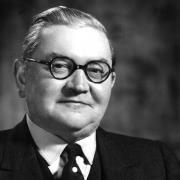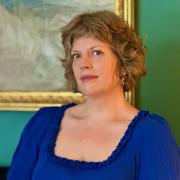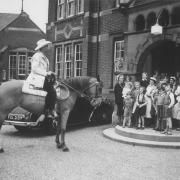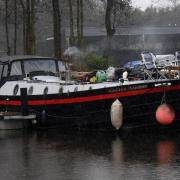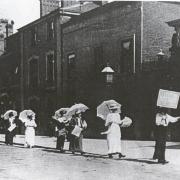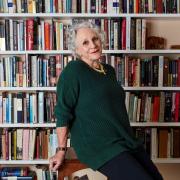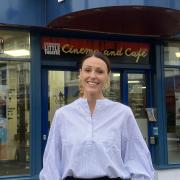On the May 27, 1796, a private coach set out from Great Yarmouth, to travel to London. It stopped, as was customary, at various points only to take on fresh horses and to pay tolls. When it arrived in central London the following morning, the coachmen discovered the body of one of the passengers, shot through the head.
The body was that of Lord Charles Townshend, son of the 1st Marquess Townshend. Also in the coach, but alive, and definitely kicking, was his brother, Lord Frederick Townshend. Lord Charles had, just the day before, been elected as an MP for Yarmouth, and Lord Frederick was an ordained priest and was Rector of Stiffkey. Both owed much to family patronage, Yarmouth was effectually a family seat – Lord Charles’s successor was another family connection - and the Marquess was the patron of the parish of Stiffkey.

Something in the demeanour of the brothers before departure must have aroused concerns because following their coach was another, this time occupied by a former Mayor of Yarmouth, brewer Sir Edmund Lacon. Sir Edmund was concerned at the behaviour of the brothers following the election, finding it bizarre. In fact, he described it as showing ‘the most indubitable symptoms of insanity’. This was not perhaps wholly surprising, Lord Frederick had a history of mental instability, but it was, in particular, the behaviour of Lord Charles upon which Sir Edmund was later to comment. Although Sir Edmund expressed the view that the brothers had seemed on good terms (he had never seen, he said ‘a greater bond of affection’), and although there had been no ‘falling out between them’ before leaving Yarmouth, he was still sufficiently concerned to have followed them to London in order to warn their father about their behaviour.
His concerns seem to have related to the behaviour during the election of both brothers, but particularly Charles. Both brothers had apparently been liberally dispensing money to all and sundry (there was no suggestion of ‘buying votes’ as Charles had been elected unopposed) but on election day Charles had entered the house of a political opponent and narrowly escaped being forcibly ejected through a window. That night he had behaved in an extraordinary fashion, talking wildly and opening and banging shut the window shutters to such a degree that his friends had felt it necessary to leave him overnight in a locked room. They also determined that it would be best to get him away from Yarmouth at the earliest possible opportunity.
This haste may have contributed to the tragedy which followed. The plan had originally been for the two young aristocrats to travel with their personal servants. However, departing at short notice meant that there would be an insufficient number of replacement horses available at Woodbridge, and so the servants were directed to follow as soon as they could. In the event they arrived in London about two hours later than the original coach. There was therefore a succession of coaches chasing down the London Road, Lord Charles and Lord Frederick in one coach, closely followed by Sir Edmund in a mail coach, closely followed by a third carrying the servants. Both servants, Parnell and May, were aware that Lord Frederick had been previously confined for insanity a few years earlier, and one of them later gave evidence that he had previously been placed in a straitjacket. Parnell, Lord Frederick’s servant with the 20/20 hindsight with which some witnesses seem blessed, averred that he had recognised the early signs of another bout of insanity in his master, and Charles’s servant, May, that his master had been behaving very strangely, believing himself to being stalked.
But what had happened on the journey? One of the postillions, Christopher Airy, subsequently gave evidence that he had been based at Ilford and at 4am he had been summoned from his bed to put in four fresh horses and then to drive on, with a colleague, to Hanover Square in London.

The onward journey had started uneventfully, and Lord Frederick had paid the turnpike at Stratford, but, as they approached Mile End Airy had been startled by the sound of a gunshot. Turning round, he saw Lord Frederick leaning out of the window to throw a pistol into the road and waving his hat in the air, while shouting at the top of his voice. Perhaps surprisingly he decided to drive on, ignoring the incident. On arrival in London, he stopped at the junction of Argyle and Oxford Streets to ask for directions to his final destination. Given what he had witnessed at Mile End, he probably approached the carriage door with some caution. And well he might. Lord Frederick, he deposed, had hit him in the face and then climbing down from the coach had removed his coat and waistcoat, rolled up his breeches and threatened him. This account of Lord Frederick’s behaviour was confirmed by the other postillion, John March, who also said that Lord Frederick had earlier given him two guineas to disburse to any deserving person such as a widow with a family. A noble gesture, but a rather strange way of distributing charity.
Having evaded Lord Frederick’s attack, Airy then opened the carriage door to find the body of Lord Charles, shot through the head, lying on a cushion. The hullabaloo caused by Frederick’s attempted assault on Airy had attracted quite a crowd of interested spectators who, when the body was discovered, surrounded Lord Frederick and took him to the local watch-house, on Oxford Street. This building had originally been constructed as a courthouse on the site of the former Tyburn church but it was by then used as a base for local watchmen (officers of the law) and firemen.
While Lord Frederick languished in the watch house, the body of his brother was taken to the premises of Mr Barnham, a chemist, at 330 Oxford Street, where his apprentice, a Mr Kerrison, examined the body, and declared that Lord Charles had been shot about two hours earlier, and that the pistol must have been placed in his mouth before being fired. He was able to deduce this from the fact that the deceased’s teeth had not been damaged by the shot. This deduction was consistent with the explanation offered by Lord Frederick. He claimed that he and his brother had disagreed ‘about a matter of religion’, following which Lord Charles had taken out a pistol put it in his own mouth and pulled the trigger. Lord Frederick claimed that on seeing this he had taken the pistol, put it in his own mouth intending to emulate his brother, but that the pistol had mis-fired.

Things moved quite fast. The same evening an inquest into the death was held at half past six. Somewhat bizarrely, if conveniently, it was held in an inn next door to Mr Barnham’s chemist’s shop. Evidence was given by Messrs Airy and Marsh, by the servants Parnell and May and by Sir Edmund Lacon. Medical evidence was also given which tended to bear out the deductions of Mr Kerrison and after four hours the jury retired to consider its decision. It took them little over an hour to reach a verdict which was ‘Death occasioned by a pistol shot, but by whose hand they could not determine’ – Lord Frederick’s story appears to have been sufficiently consistent with the medical findings to have muddied the waters enough to confuse the jury. Unless of course they were in awe of his Lordship’s social position.
All the commentators I have read seem confident that the story of the suicide and subsequent attempted suicide of the two brothers is unlikely to be true. Certainly, the other evidence about the disposal of the weapon – the only incident directly witnessed by a third party, and Lord Frederick’s belligerence towards Airy when the coach arrived in London don’t seem consistent with such a conclusion. But there is just a chink of doubt – was this a case of a partially-failed suicide pact, or fratricide?
The balance of probabilities seems to favour fratricide – Lord Frederick was subsequently declared insane, and spent the last 30 years of his life in a lunatic asylum, albeit one with a clerical connection, having previously been the residence of the Bishop of London. Clearly the Marquess did not feel inclined to appoint a new Rector and the insane Lord Frederick remained in post, with the services being taken by a succession of curates, until his death. His successor, not surprisingly given the family patronage, was his nephew.




